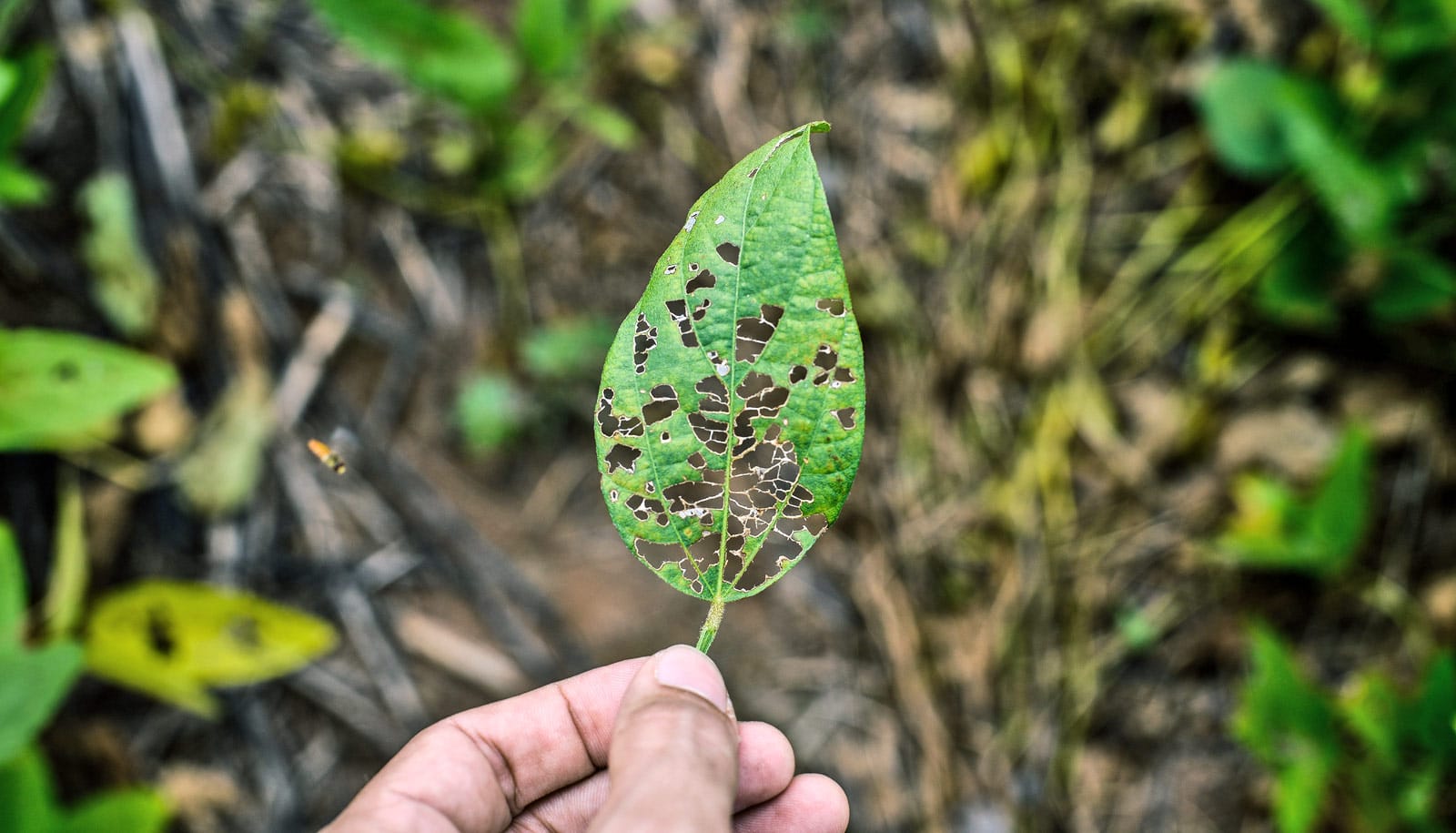New technology could allow anyone with a smartphone to diagnose crop disease the same way trained plant breeders and scientists do.
The findings show how artificial intelligence can identify a range of common stresses in soybeans and improve efficiency for plant breeders and farmers.
Researchers started by collecting a large dataset of around 25,000 images of soybean stresses taken in Iowa, says Arti Singh, an adjunct assistant professor of agronomy at Iowa State University and co-corresponding author of a paper in the Proceedings of the National Academy of Sciences.
“We want this technology to allow machines to see with the eyes of an experienced plant breeder.”
The team developed an automated machine-learning framework to find patterns in the soybean leaf images that correlated with eight common sources of stress—such as diseases, nutrient deficiency, and herbicide injury—and came up with a computer application that can diagnose and quantify the amount of various foliar stresses by analyzing digital images of soybeans.
Scouting crops and conducting visual measurements for stress is a time-consuming and often inconsistent process both for plant breeders and farmers, so introducing an automated tool could save time and produce more standardized results, Singh says.
“We want this technology to allow machines to see with the eyes of an experienced plant breeder.”
Researchers compared the performance of their program with actual diagnoses from trained plant scientists, and the results showed excellent correlation, says Soumik Sarkar, assistant professor of mechanical engineering and co-corresponding author. Further, the program qualifies its diagnosis by providing the specific visual symptoms it noted to reach its conclusions.
Computer model can tell farmers what crops to plant
While the program is currently available only for academic communities, the researchers say they intend to deploy the application on smartphones to make the product available widely.
“This is a prime example of how artificial intelligence can be applied to agriculture,” Sarkar says. “It can provide more automation and more efficiency than the traditional way of diagnosing these stresses.”
Asheesh Singh, associate professor of agronomy; Baskar Ganapathysubramanian, associate professor of mechanical engineering; and PhD students, Sam Ghosal in mechanical engineering and David Blystone in agronomy, contributed to the work.
The Iowa Soybean Association, the ISU Plant Sciences Institute, the ISU Presidential Initiative for Interdisciplinary Research, the US Department of Agriculture, and the National Science Foundation funded the work.
Source: Iowa State University



